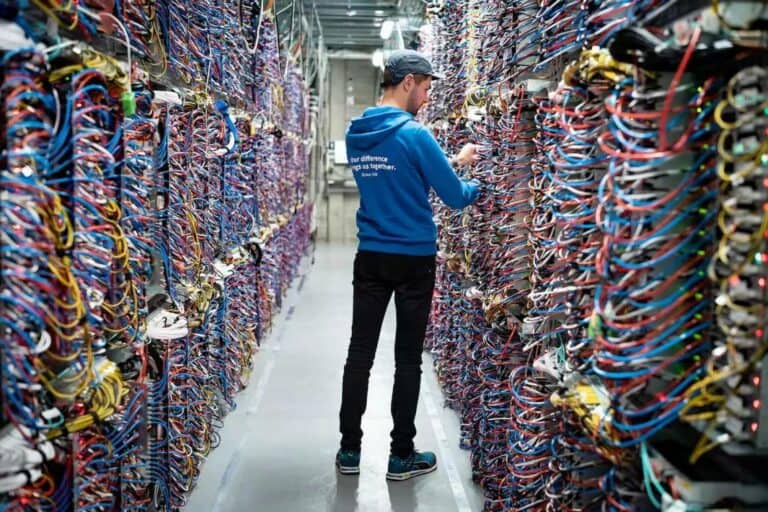OVHCloud established a fire-fortified datacenter in Strasbourg, where a fire damaged two of its datacenters in 2021.
According to the initial findings of an inquiry into the fire, water seeping onto an inverter started things off. The complete absence of an automatic fire extinguishing system, delayed power cutoff and overall structural architecture all played a role in the SBG1 datacenter being damaged beyond repair and the SBG2 datacenter being destroyed.
OVH isolated the datacenter halls from their support infrastructure in the new SBG5. Batteries are housed outside the datacenter in fire-rated shipping containers. Isolated “energy rooms” house transformers and other electrical equipment.
How OVH plans to deal with fire
The two rooms containing the telecom gear that links SBG5 to the rest of the world have been situated at each end of the structure, creating a physical barrier between the two paths that access the facility. Likewise, network rooms are separated from the main structure.
All structures have been constructed using two-hour fire-resistant walls, and two additional barriers ring the entire plant. Every internal compartment has a pair of Very Early Smoke Detection Apparatuses. Sprinklers and inert gas can both be used to put out flames.
Still on liquid cooling
Even though liquids are suspected to be the origin of the 2021 fire, OVH continues to employ liquid cooling for all of its servers. It says that by doing so, SBG5 gains a power use efficiency (PUE) score of 1.1 to 1.2.
PUE compares the quantity of energy entering a datacenter to the power consumed to run the equipment. PUEs near 1.0 indicate high-efficiency datacenters that don’t use much energy for cooling and other operational tasks.
OVH used the introduction of SBG5 to unveil a cold storage service that would be housed in four mini-datacenters throughout France, each at least 200 kilometres apart.
